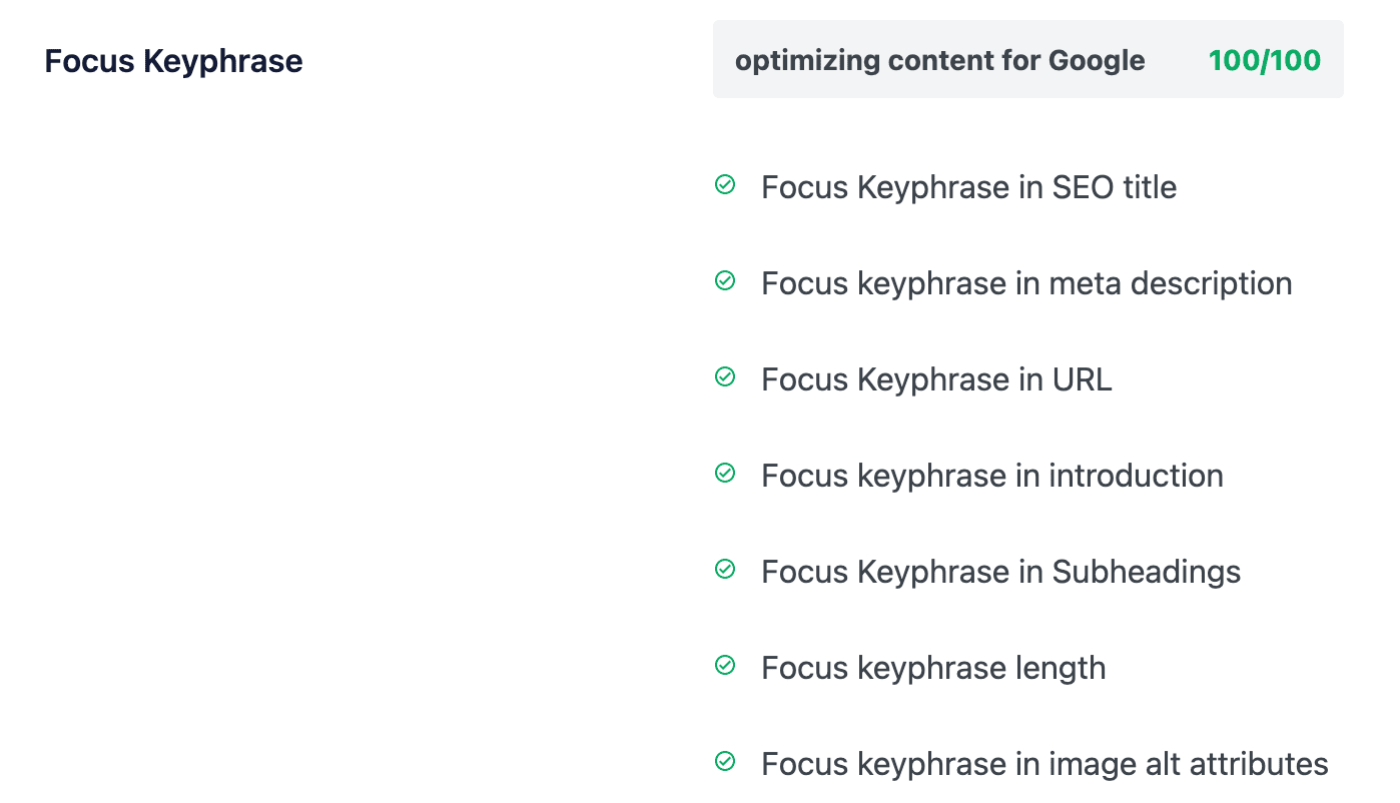Notice: There is no legacy documentation available for this item, so you are seeing the current documentation.
When you create or edit content on your site, you’ll see fields for Focus Keyphrase and Additional Keyphrases and a section for Page Analysis.
It’s important to understand the difference between these features and the information they provide to help you with your on-page SEO.

IMPORTANT:
The TruSEO features are disabled on the following pages because they don’t have static content:
- WordPress Static Posts page
- WordPress Privacy Policy page
- WooCommerce Cart page
- WooCommerce Checkout page
- WooCommerce My Account page
Let’s start with the Focus Keyphrase and Additional Keyphrases fields.
In This Article
Focus Keyphrase
The Focus Keyphrase and Additional Keyphrases fields are part of our TruSEO content analysis feature. You can use this feature to analyze your content for relevance to specific phrases that you want to rank for.
The Focus Keyphrase is the primary subject you’re writing about.
For example, if I’m writing a blog post about how to optimize content for Google, then I may decide that my Focus Keyphrase is “optimizing content for Google”. This is the focus of my content and is how I’d ideally like my content found in search results.
I enter this phrase in the Focus Keyphrase field and All in One SEO will analyze my post content to see how well it’s optimized for that phrase.
For example, it will check if I’ve used my keyphrase in the SEO title and meta description, or in the URL and first paragraph, or as the Alt text for any images in my content.
In fact, AIOSEO will perform more than ten different checks to see if my content is relevant to my focus keyphrase. You can find a list of the Keyphrase Checks performed by AIOSEO here. The results are shown beneath the Focus Keyphrase field and a score out of 100 is displayed.

Additional Keyphrases
I may have additional keyphrases I want my content to be optimized for, such as “optimizing content for search engines” or “on page SEO”. I can add each of these in the Additional Keyphrases field and I’ll see separate results for how well my content is optimized for each phrase.
The results are shown beneath the Additional Keyphrases field along with a score out of 100.

NOTE:
The results provided for each keyphrase are recommendations only, they are based on our best practices. You do not have to follow them rigidly if it means it will affect the quality of your content.
Your content quality is the primary ranking factor with all search engines and you shouldn’t change your content if you feel that it won’t benefit your audience. You know your audience better than anyone else.
Following these recommendations does not guarantee you will show up in search results for your keyphrases. Search engines display results based on many factors, these recommendations are just some of them and are recommended best practices.
Page Analysis
The Page Analysis feature is separate from the Focus Keyphrase and Additional Keyphrases feature.
Unlike the Focus Keyphrase and Additional Keyphrases feature that analyzes your content for relevance to keyphrases you enter, the Page Analysis checks to see if you’ve implemented common on-page SEO techniques to optimize your content and make it more readable to your audience.
Page Analysis checks for over a dozen different aspects of SEO and readability including SEO title and meta description lengths, internal and external links, images and videos, paragraph length, and more.
You can find a list of the Page Analysis Checks performed by AIOSEO here. The results are shown in the Page Analysis section and there are tabs for Basic SEO, Title and Readability.

NOTE:
The Page Analysis results are recommendations only, they are based on our best practices. You do not have to follow them rigidly if it means it will affect the quality of your content.
Your content quality is the primary ranking factor with all search engines and you shouldn’t change your content if you feel that it won’t benefit your audience. You know your audience better than anyone else.
TruSEO Score
The score you see for each page or post is based on the Page Analysis and any score you have from your Focus Keyphrase and Additional Keyphrases.
The score is out of 100 and is a quick and easy way to see how well you’re doing with your content.
Your goal is not to get a score of 100 on every post or page. Your goal is to write the best content you can for your specific audience.
The score is there to remind you to consider on-page SEO when publishing content and to encourage you to adopt recognized best practices.